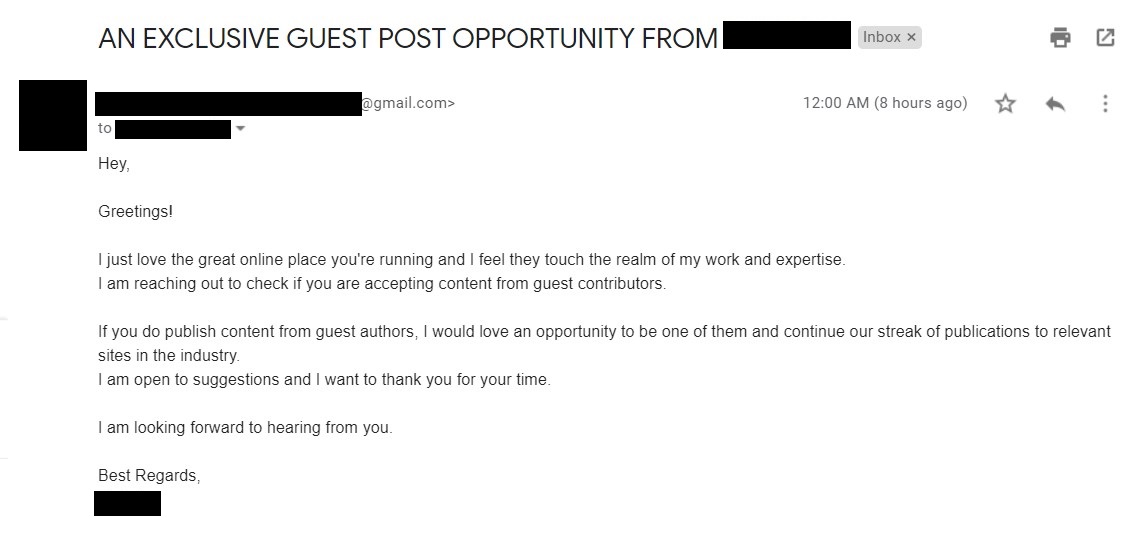For writers, good SEO is all about writing content that readers value. Here are some universal tips to help you pull that off.
SEO can be a bit of a loaded term for freelance writers.
Your clients seem to expect you to know a lot about it. They’ll usually have a strong conviction that it’s important to get on the front page of Google, but a vague idea about how.
That’s where you come in. You’re the writer, so you know SEO, right?
Not so fast.
You might know a thing or two. But it’s also possible that some of the things you know are already out of date.
It’s kind of an unfortunate (and unfair) reality that writers often face unrealistic expectations from clients when it comes to SEO. Sure, there is no SEO without content, but that doesn’t mean that writers should carry water for technical, user experience, or reputational issues that might be dragging a site down.
SEO is not magic. One SEO-optimized article isn’t going to save a business.
If there are technical SEO issues (e.g., your client’s site load speed is in the gutter), then it doesn’t matter how good the content you’re writing is.
If your client is suffering from reputational damage, there’s not much your work can do to save them.
I also often hear from a lot of writers that there are ambiguities with clients about who’s responsible for content strategy, like keyword research and figuring out what to write about. You can read our post on that question here, but TL;DR, it’s not you (unless you’re being paid for it).
What are we getting at here?
When it comes to what writers need to know about SEO, the answer is this: you only need to know what you need to know to do a good job with the writing.
For writers, good SEO is about creating copy that readers find valuable.
Good SEO is just good writing that readers love.
Seems deceptively simple, right? How exactly do you create good content that readers love?
By looking at the kind of content that Google rewards.
[click_to_tweet tweet=”#SEOtip Google likes what its users like. That’s why we always say don’t worry about Google, just worry about the reader. #writertip” quote=”Google likes what its users like. That’s why we always say don’t worry about Google, just worry about the reader.”]
Google’s business model depends on putting the best content they can find in front of their users. If you want to be valuable to your clients and offer them that kind of content, which stands the best possible chance to rank in Google Search, you need to know what kind of content Google likes.
To bring this full circle, Google likes what its users like.
That’s why we always say don’t worry about Google, just worry about the reader.
Now how do you do that?
These 6 tips will get you off to a good start.
6 quick SEO tips that will help your copy
No. 1: Improve your copy’s readability
After you write your first draft, put your editor cap on and look at your copy with these things in mind:
- Are my sentences short?
- Do I effectively transition between ideas?
- Are my paragraphs “scannable”?
- Have I used headings well to break up the copy?
- Is my copy error-free?
You can also as yourself questions about tone. Are you writing for a general audience? You should, even if you’re writing more technical copy.
Are you using big vocabulary words or excessive industry jargon? This might make you feel impressive to your client, but it drags down the reader.
Try scoring your work against the Flesch Kincaid model. If you have a WordPress account, you can download the SEO Yoast plugin which will help immensely.
No. 2: Put a lot of thought into the title
A keyword-stuffed title won’t help you rank in Google these days. You have to spend extra time crafting a title with a reader in mind.
If your content is the best match for their specific question or has information you think they need, how will you get their attention? How will your title tell them “Hey! Over here! This is it!”?
Consider the following:
- The title should be highly specific to the topic at hand.
- It should use words that provoke emotion (but be balanced and strategic here, it’s easy to overdo it)
- Headlines should be about 55-60 characters long, or roughly 6-8 words.
- It should use the focus keyword in the first 3 words if possible
- It should have a sentiment of some kind, or a “tone”
You can use tools like CoSchedule’s Headline Analyzer to help guide your efforts. Shoot for a score of 70 or above.
No. 3: Use keywords strategically
Keyword use is probably the most misunderstood aspect of SEO for writers.
Long gone are the days when cramming a bunch of keywords into copy tricks Google into ranking content highly in search. (Don’t try it. You might get your client hurt.)
Some SEO experts have pointed to this as evidence that keywords don’t matter anymore. And since Google is opaque about how Search actually works, that theory seems as good as any.
Keywords are certainly less important if by “less important” you mean that it’s impossible to spam Google with blackhat SEO.
But obviously keywords play an important role. A keyword like “how to fix sink” isn’t a magic incantation, it’s something a user is actually looking for and needs an answer to.
Google wants to match quality content to users, and keywords are still an important part of that.
So, use your keyword in the title as we mentioned, in the introduction of your copy, and a few times in the body.
You can and should also use related keywords if they’re relevant to the topic.
Do not try aiming for an arbitrary keyword density score, or cramming unrelated keywords into your copy. That will dilute your copy’s ability to rank for the topic you’re writing about.
And don’t sacrifice readability for an exact keyword match. “Good cupcakes Atlanta GA” isn’t going to read well if you just jam it into your copy.
Google is smart enough to recognize it semantically if you write it into a sentence naturally (e.g., “If you’re looking for good cupcakes in Atlanta, look no further!”).
No. 4: Use high-quality links
Linking plays a huge role in what Google values. So much so that there are a multitude of ethically-dubious business models built around trying to “sell” links (“If more sites link to your content, Google will think your site is important!”).
We won’t get too deeply into that mess. But links do play an important role for writers, particularly when it comes to research.
You’ll most likely want to link out to supporting facts, figures, data, and commentary for anything you write. Linking is a good SEO practice.
But what you link to matters. If you’re linking to spammy, low-quality sites with bad information, Google notices, and will penalize your client’s site for promoting shifty content.
This means writers need to perform high-quality research and only link to high-quality sites. This can get complicated since many sites at the top of Google search for your topic may be competitors of your client. It goes without saying that you don’t want to link to them.
But links to published, authoritative studies, or non-competitive sites are valuable, so be judicious in your research and include links where you can.
No. 5: Write a good intro hook
One big signal to Google that content is valuable to readers? They stick around to read it.
Using your first 100-200 words to “hook” a reader is critical to getting them to stick around. Good writers use a variety of tools to keep a reader engaged, including:
- Framing the article using a real-world anecdote
- An attention-grabbing opening sentence (a bold claim, something shocking or humorous).
- A surprising or shocking statistic or data point
- An intriguing question that your content answers
If a reader clicks on your title, reads the first few sentences, and exits out of the page, that tells Google that the content wasn’t valuable to them, or that they didn’t find what they were looking for.
Some of that is inevitably going to happen. But if the introduction falls flat, is boring, or doesn’t pull in a reader, and most readers bounce off the page, it will hurt ranking.
No. 6: Add stuff your competitors missed
Google wants content that is unique, compelling, authoritative, relevant, and high-quality.
In layman’s terms, this means that your content has to do better than your client’s competitors.
Take a look at the top-ranking posts for a keyword or topic your client wants content written for. Ask yourself, or your client:
- Do we have unique insights that our competitors don’t have?
- Do we have data or statistics that are more recent or relevant?
- Is there supplementary content we can add to give more value to the reader?
Of course, sometimes you will luck out and find results that don’t match the search query very well. In this case, the door is wide open to write a great piece of relevant content that has a strong chance of taking the top spot.
Takeaways
Many writers do eventually come to specialize in more strategic SEO and offer those services to their clients. But when you’re starting out, we think it’s important to laser-focus on the parts of SEO you need to know to do the writing part well.
For writers, that means writing well.
It means don’t worry about Google, just worry about the reader.
If you do want to learn more about SEO, we have a much longer article on this topic here.
If you have any feedback for me, I welcome it! Please reach out on LinkedIn.
















